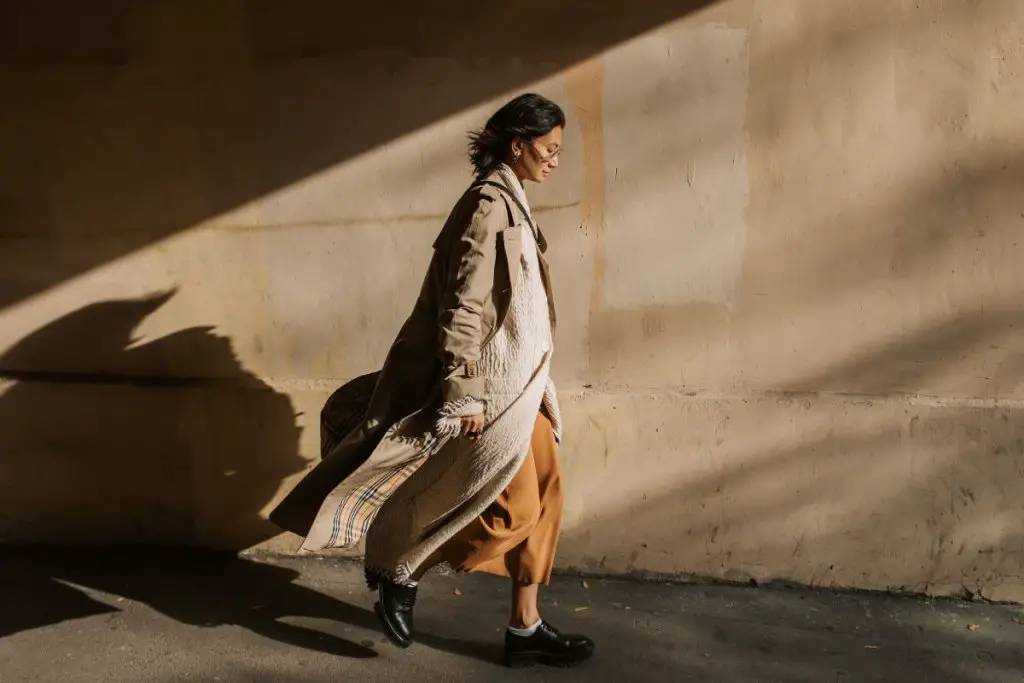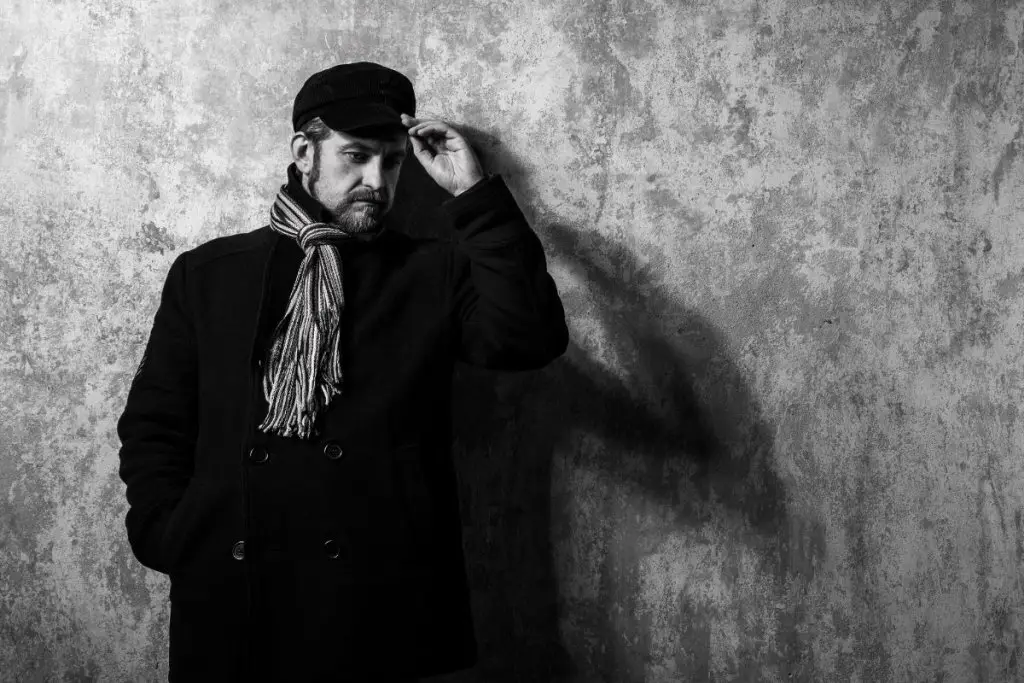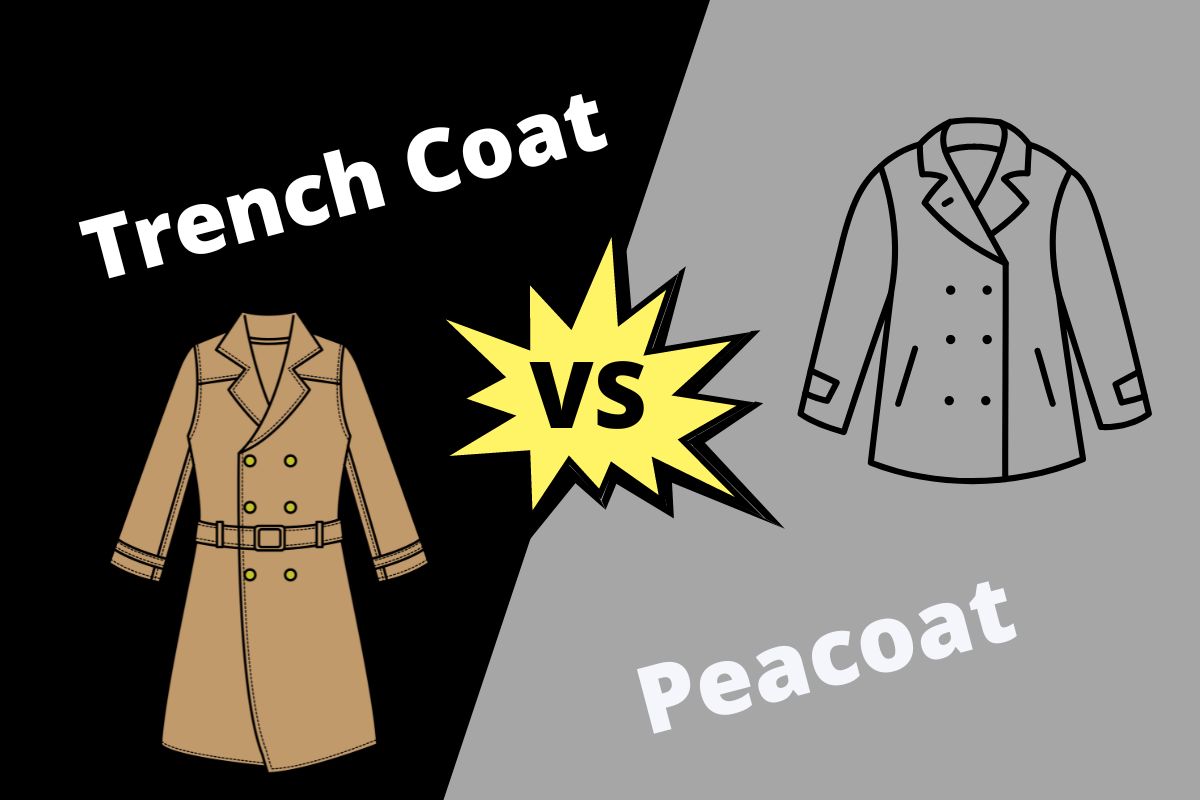The main difference between a trench coat and a peacoat is that trench coats are longer than peacoats. Peacoats are usually made from wool.
Trench coats and peacoats are two types of coat are gaining popularity due to their stylish and warm qualities.
These two coats are similar in several ways. Read on to discover the differences between the two coats and find out which coat would suit you the best.
Table of Contents
Trench Coat vs Peacoat – Key Differences
| Trench Coat | vs | Peacoat |
| They feature a square shape to fit more loosely. They have a double-breasted design to allow for more flexibility in the shoulders. | Fitting | Peacoats have a tapered fit, and the double-breasted silhouette offers more shoulder room, which improves upper torso motion. |
| Composed of gabardine. | Fabric | Composed mostly of wool. |
| More designs and long sleeves. | Design | Peacoats are ageless and traditional. Modern ones are more fashionable. |
| Keeps you warm and dry because of the rubber. | Warmth | Keeps you warm because of wool. |
| Longer than peacoats. | Length | Longer than most coats, shorter than trench coats. |
What is a Trench Coat?
A trench coat is a double-breasted, long, loose overcoat with a belt.
Manufacturers typically use cotton gabardine or another waterproof fabric to make it. Trench coats may nearly wholly enclose the body because of their length.
Some jackets reach the shins, while others get to the ankles. Like peacoats, they can be formal or informal.

What is a Peacoat?
A peacoat is a small, double-breasted cloak constructed from rough woolen material.
Initially, sailors in the European and American fleets wore peacoats. As a result, peacoats were often manufactured in the American navy for army officers.
However, peacoats now come in different colors and patterns for both men and women. They’re adaptable to cold temperatures of winter or outerwear that you may dress up or down depending on your mood.

Whats the Difference Between a Trench Coat and a Peacoat?
Fit
The peacoat’s initial cut was straight but flared at the bottom to facilitate mobility. These days, peacoats have a tapered fit for formal events. The wearer’s figure is more clearly defined because of the tapered fit of the winter coat.
The double-breasted silhouette also has more shoulder room, which improves upper torso motion.
Trench coats, on the other hand, feature a square shape to fit more loosely and have a casual look. The loose fit accommodates the military uniform’s heft.
The trench coat’s open form enables you to wear layers under it, like a sweater, to increase warmth since the trench coat isn’t as cozy. To allow for more flexibility in the shoulders, trench coats come in a double-breasted design.
Fabric
The main difference between the two coats is in the fabric used.
Due to wool’s inherent thickness, insulation, and general waterproofing, peacoats have traditionally been manufactured chiefly with this material to protect you from cold weather conditions. Even if they may not be made entirely of wool, it is the main component of peacoats produced today.
Other Fabrics and Materials Used
Manufacturers may even use nylon, cotton, or polyester to create certain types of peacoats. Although these materials are less expensive, they do not produce peacoats of the same caliber as wool.
Trench coats of the nineteenth century were typically made from rubber. Even though rubber offered the user good weather protection, makers quickly realized that this was not the ideal material.
Trench coats began to be produced at that time using the robust cotton fabric known as gabardine. It proved to be the best material since it is waterproof and lightweight. Many trench coats still have it in addition to synthetic fabrics like polyester.
Design
Peacoats are ageless and traditional, and the basic style hasn’t evolved much over time. However, since modern peacoats are more fashionable, they’re no longer associated with the military.
Today the color, fit, and fabric options vary more. However, essential design elements like the wide collar, the buttons, the pockets, and the double-breasted silhouette remain the same. They are dual-breasted and feature metal buttons up the front.
Peacoats are usually more valuable than trench coats due to their design elements. For instance, sleeve straps, one of the defining characteristics, may be used to fasten sleeves around the wrists to block off the wind and rain.
Warmth
Because peacoats are made of wool, they’re intended to keep you warm. Peacoat design elements are also beneficial in keeping out the cold.
The wool coat fits more closely to the body since it has closed buttons at the front. This will prevent wind and cold air from penetrating the cloth. To keep the chilly air off your neck, you may also button the broad lapel and collar and turn it up at the rear.
You can also stay warm with trench coats, but they’re not as effective as peacoats. Trench coats keep you warm and dry since manufacturers use cotton gabardine rather than wool.
You may quickly turn up a trench coat’s wide collar to keep you comfortable. It’s possible to adjust the sleeves’ cuffs as well. But generally, peacoats win in terms of warmth.
Length
Peacoats are a little longer than most other jackets since they were worn over an army uniform. They often reach the middle of the thigh or a little lower to the length of the hips. As a result, they’re a bit longer than a man’s shirt hem.
Peacoats are the ideal length for ladies to wear over a blouse or dress, and they’re shorter than trench coats.
Trench coats usually strike at or even just below the knees. These long coats are water-resistant and shield more of the torso from rainfall and wind. However, their short length makes it easy to maneuver or prevent tripping over them, which is why the army chose them for military use.
Which Coat Will You Wear?
Peacoats and trench coats have a lot of similarities, but they can differ depending on the occassion or season.
Longer peacoats very often have a wool composition. Conversely, trench coats are shorter and come in a variety of fabrics. Plus, trench coats will keep you dry during rainy weather, while peacoats provide better protection from chilly weather.
If you’ve enjoyed this article, check out our post comparing Louis Vuitton and Louboutin.

